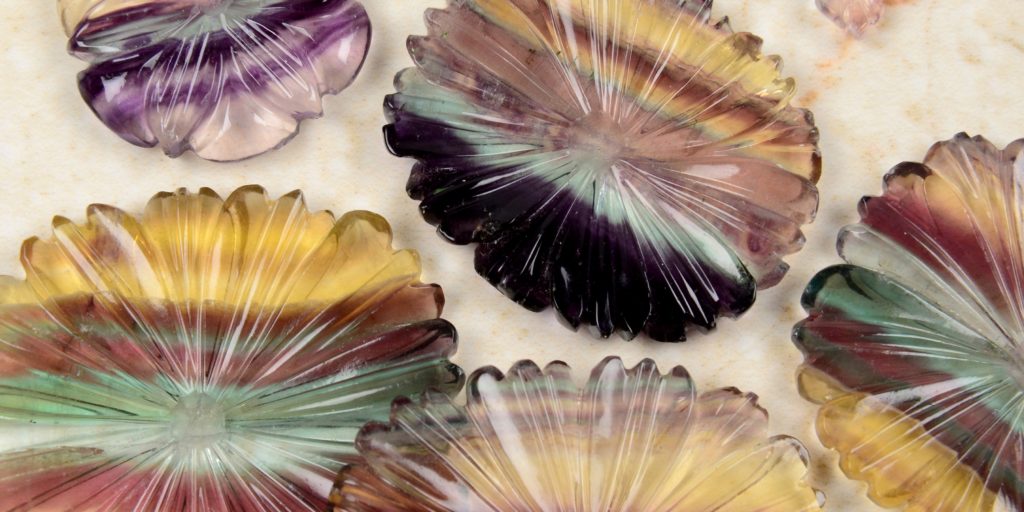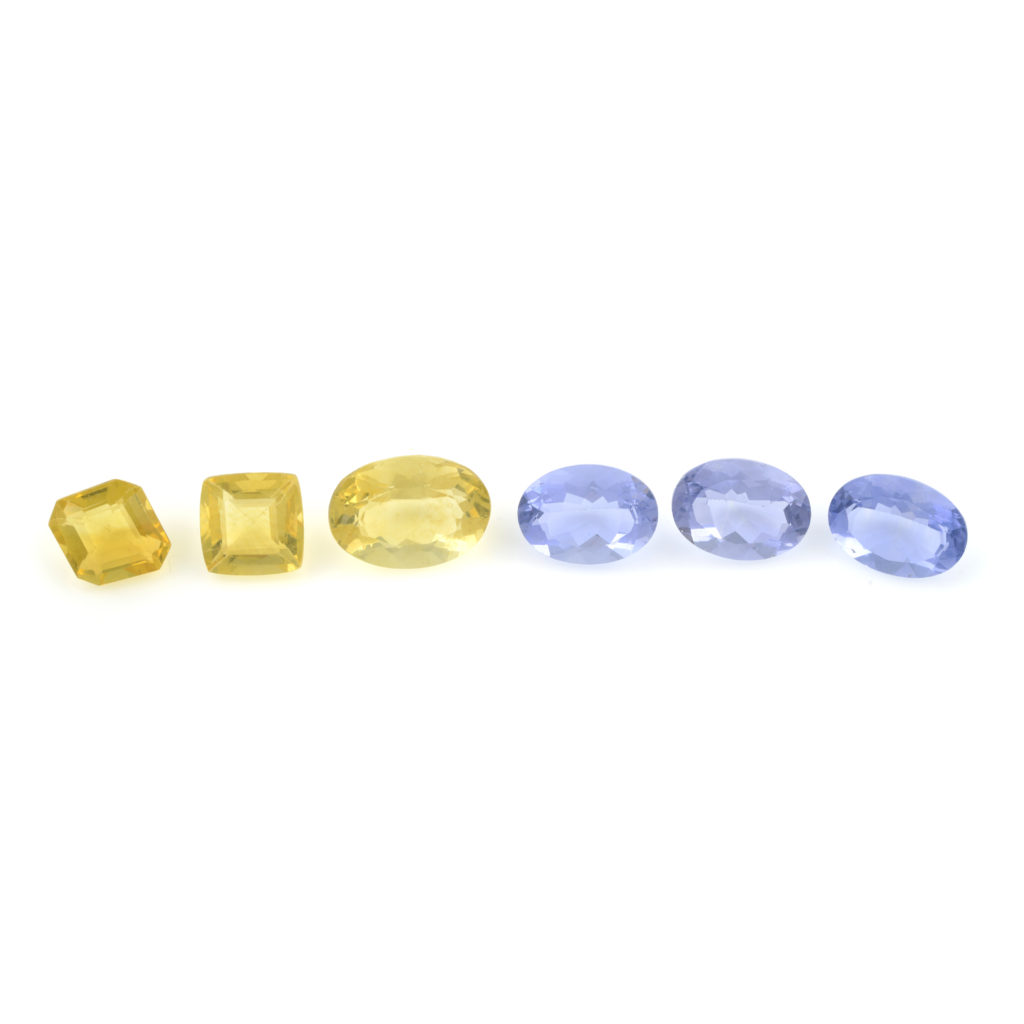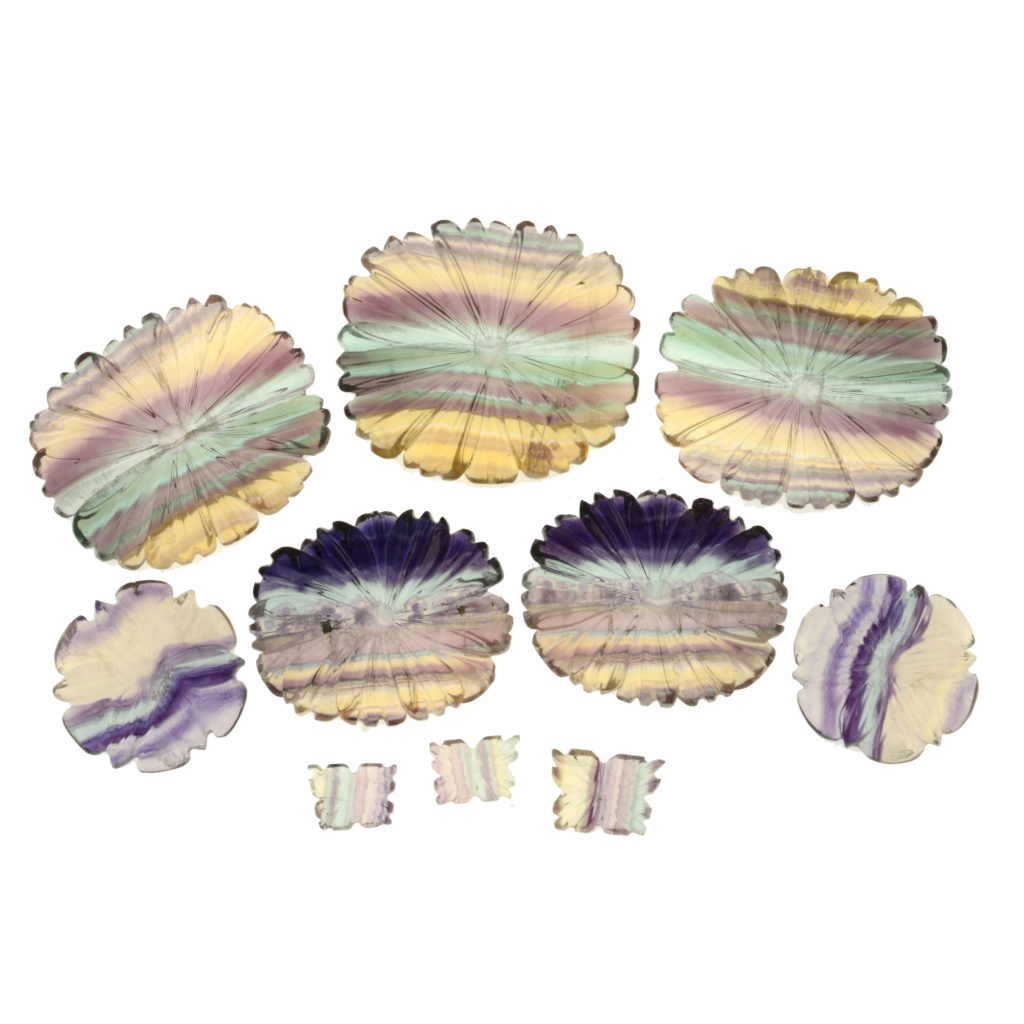
Introduction to Fluorite
Fluorite is a common mineral employed in a variety of fields. But, the best quality specimens are faceted and used for ornaments and jewellery.
It is a soft gemstone, as it only reaches a 4 on the Mohs' hardness scale. However, its incredible diversity of colours and unusual colour zoning has been appreciated by jewellers and collectors for a long time.
Pure fluorite, CaF2 is colourless. But, fluorite specimens are found in any colour and saturation; from delicate pastel hues to intense electric ones.
This happens because fluorite is an allochromatic mineral, which means that chemical impurities within its structure cause each different colour in the gemstone. To make this stone even more interesting is the fact that the colours are sometimes coexistent in fluorite’s structure. This creates ‘bands’ of vivid hues.
Each layer of fluorite has crystallised at different times, and the contamination of other elements in the original structure has varied over time. Generally, the concentration of these impurities does not exceed 1% but it is enough to drastically change the appearance of the gemstone.
The elements causing colours are mainly Rare Earth Elements (REE) and it is believed that manganese and yttrium contribute to the purple colour, whilst iron and copper to the green and blue, depending also on the other elements present in the structure.
Natural radiation can also be a reason for the variety of colours. Especially if strong enough to modify the atomic bonds in the structure.
The History of Fluorite
Fluorite is mined all over the world, however, England is known for the Blue John variety, a white and purple banded fluorite that has been carved since Roman times. Thanks to the colour and size of the crystals, it was often employed for producing glasses and vases. The Egyptians valued fluorite softness and used it to carve talismans such as scarabs. It is also appreciated in China, where it has been carved for hundreds of years.
Being a common mineral meant that throughout the centuries, fluorite was often confused for other gemstones, such as beryl, feldspar, glass and quartz.
Nonetheless, I believe we can agree that fluorite is one of the stones which demonstrates how beauty can be created through imperfection and impurities.














